Why I’m making South African Syrah this year….
South African Shiraz is an under rated wine in the US. It is deep ruby in color with vibrant red fruit, baking spice notes, rounding out with notes of anise and black pepper. It is a complex wine with many layers of flavor. Unfortunately, there are not many distributed in the United States, so it’s a great reason to make it at home.
The Shiraz grapes come from a boutique wine growing region of South Africa called Devon Valley. Devon Valley is an estate vineyard that is planted on the valley slopes. It has rich soil and the benefits of warm days and cool breezes at night for optimal ripening.
For winemaking BDX is my yeast of choice this year. It is a vigorous fermenter and can handle 16% alcohol. BDX brings out the ruby color, while increasing the mouthfeel and soft tannin extraction. Personally I love soft tannins in a Syrah, but want to keep a solid structure in the wine. BDX should help me maintain the Syrah style I like, while bringing out the South African varietal character that it is known for. As for ageing, I am thinking about exposing the Syrah to a small amount of American oak, but I am still on the fence. It can add coffee notes to the Syrah, but I am not sure if I should let the fruit shine or add a little extra dimension to the wine. What do you think?
The Syrah grapes arrive this week. Decisions, decisions….
Winemaker Spotlight: Grettchen van der Merwe of our South African Vineyards
How did you get started winemaking? What first attracted you to winemaking?
I grew up in the Cape Winelands and studied Viticulture and Oenology at Stellenbosch University. I love the process of winemaking, the chemistry of it. Wine is a living thing and it is wonderful to be able to make something with the potential to be enjoyed for years to come as it grows and matures in the bottle.
What do you look for when you make wine? What is your general winemaking philosophy?
It is all about the grapes, get the best grapes possible and make sure you have the basics right, but don’t try to over engineer the process.
What is the most difficult aspect of making wine? What’s or biggest challenge as a winemaker
You are working with nature so you cannot predict what’s to come in a season and every season has its own challenges. I think the most difficult are seasons where the vines are stressed, be it from high temperatures or wet weather that can increase risk of fungal infections in the vineyard.
Are you filtering your wines?
There is a movement toward unfiltered wines, especially as consumers become more educated and willing to accept a little sediment in the bottle. I do prefer to filter my wine, but use the most coarse (largest micron size) filter available. Basically just to give the wine a rough polish as it goes into the bottle.
Are there any new winemaking techniques or tools you’d like to experiment with?
They aren’t necessarily new tools, but you can achieve a lot with good use of enzymes and tannins at vinification. I like to cold soak my grapes before fermentation; you get the benefit of good color and flavor development without the harsh tannic extraction that happens after fermentation (when alcohol is present).
What’s your favorite wine region?
Many different regions excel at specific varietals, which is part of what makes wine exciting, you can have a Syrah from South Africa; Australia and France and all three can be fantastic but also completely different in style.
We want to give a BIG Thank you to Grettchen for answering our winemaker questions and we look forward to meeting her in person on April 2nd. We would like to invite all of our winemakers to meet her Monday April 2nd from 1:00-6:00PM at our Hartford, CT Location. Grettchen will be speaking about her vineyards and favorite winemaking practices. RSVP to Christina at cmusto@juicegrape.com. This event is FREE to join and we would love you bring in some wines that you have made for Grettchen to try. Looking forward to seeing you all on April 2nd!
Spring has Sprung – Musto’s Southern Hemisphere Wine Grape & Juice Harvest Update
Hello Winemakers and Welcome to Your Spring Winemaking Update…..
As the snow melts on the East Coast the Southern Hemisphere is getting into harvest mode. The Spring grapes and juices will be here before you know it! Below we have a mini harvest update for each region outlining all the fresh products offered by Musto Wine Grape Co. this Spring. We’ve also included some yeast suggestions for the more popular varieties.
The prices for the Spring products are here and we are Taking Pre-Orders via email and over the phone. Please feel free to contact us at sales@juicegrape.com or 877.812.1137 to place your pre-order.
We are looking forward to working with you this Spring Harvest! Keep an eye on our Facebook Page and Harvest Tracker for upcoming FREE Wine Classes and other Spring Harvest Updates.
South Africa
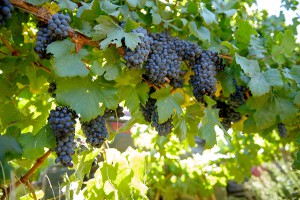 Arriving: End of March
Arriving: End of March
Grape Varieties: Pinotage, Cabernet Sauvignon
Juice Varieties: Shiraz, Merlot, Pinotage, Cabernet Sauvignon, Semillon, Chardonnay, Pinot Grigio, Chenin Blanc, Sauvignon Blanc
Vineyard Information: Pinotage will be arriving from the Breede River Valley and Cabernet will be arriving from Stellenbosch. Read more about the Pinotage here, and click here for more information about the Cabernet
Yeast Suggestions:
- Pinotage: BM4x4: A very reliable yeast. It helps increase color and palate length or D80: Increases mouthfeel and tannin integration
- Cabernet Sauvignon: D254: Brings out bright fruit flavors and complexity such as berry, plum, and mild spice.
Argentina
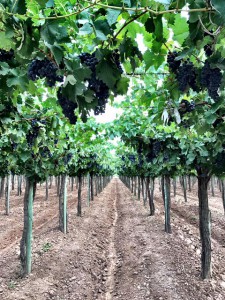 Arriving: End of April
Arriving: End of April
Grape Varieties: Malbec
Vineyard Information: The first Cantinian vineyard was planted in 1923 in Mendoza, Argentina. As of 2012, the wine grapes grown in the Cantinian vineyards were certified organic by Argencert (in conjunction with the USDA Organic Certification) and accredited by Global Program IFOAM. The vineyards are situation on elevated terrain with views of the Andes Mountains. Read more about the Argentina Malbec here
Yeast Suggestions:
- Malbec: D254: Brings out bright fruit flavors and complexity such as berry, plum, and mild spice.
Chile
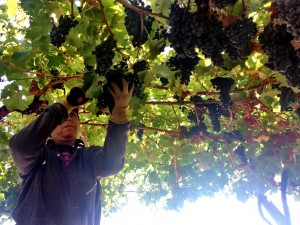 Arriving: End of April, beginning of May
Arriving: End of April, beginning of May
Grapes Varieties: Carmenere, Cabernet Sauvignon, Cabernet Franc, Malbec, Merlot, Petite Verdot, Pinot Noir, Syrah, Chardonnay, Pinot Grigio, Sauvignon Blanc, and Viognier
Juice Varieties: Carmenere, Cabernet Sauvignon, Cabernet Franc, Cabernet/Merlot Blend, Malbec, Merlot, Petite Verdot, Pinot Noir, Syrah, Chardonnay, Pinot Grigio, Sauvignon Blanc, and Viognier
Fresco Juice Varieties: Cabernet Sauvignon, Carmenere, Merlot, Malbec, Chardonnay, Sauvignon Blanc, Viognier, Chardonnay/Semillon Blend
Vineyard Information: The growing season for the Curico and Colchagua Valley’s was a hot and dry one. Expect wines with great character, intense flavors, complexity, and distinction. We should be receiving grapes around the same time as last year, maybe a little earlier for the whites. Read more here for more information on the Chilean Harvest.
Yeast Suggestions:
- Cabernet: CSM – New Yeast Coming to Musto Wine Grape in the Spring!, Keep an eye for a blog post about in on Thursday’s Winemaker Think Tank!
- Malbec: D254: Brings out bright fruit flavors and complexity such as berry, plum, and mild spice.
- Carmenere: D254: Brings out bright fruit flavors and complexity such as berry, plum, and mild spice or BDX: Promotes soft tannins, secures color, and ferments at low heat.
- Chardonnay: QA23: Promotes apple and pear notes or VIN13: Heightens pineapple and tropical notes
- Sauvignon Blanc: R2: Promotes fruity and floral notes or 71B: Brings out grapefruit notes and other tropical fruits or QA23: Promotes apple and pear notes or VIN13: Heightens pineapple and tropical notes
So pour yourself a glass of wine and give us a call or shoot us an email to secure your Pre-Order Today!
Wine Wednesday: South African Cabernet Sauvignon
As the Spring Wine Grape Harvest Approaches, we thought we would check out some of the wines that South Africa has to offer.
Today we tasted a Cabernet Sauvignon. #HappyWineWednesday
WINE: Bob’s 2013 Overnight Express South African Cabernet Sauvignon
TASTING NOTES: On the nose are notes of raspberry, berry, flint, and oak. The palate is filled with flavor, yet soft supple tannins round out the mouthfeel nicely. A great wine to enjoy with grilled meats or a meaty pasta dish.
VITUCULTURE: The soil where these grapes were grown is considered “Clovelly, Stony Glenrosa soils”. Clovelly is a component derived from granite, usually red to yellow colored. It contains acidic compounds. It is found on mountain foothill slopes and on ranges of hills, with good physical and water retention properties. Glenrosa soils are typically compact, stony, and clean cut.
WINE REGION: Western Cape, 31 miles East of Cape Town
GEEKY THINGS: Wines from the Western Cape are where some of our Cabernet Sauvignon will be arriving from. Wines from these locations are often described as having a subtle mineral note which many believe is from the decomposed granite soils. The Granite Mountains are approximately 600 million years old, over 3 times as old as the soil in Napa where many of the Cabernet Sauvignon vines are grown.
Click to Download Tasting Notes
More information about our South African Grapes are on our blog. Check out the most recent “2017 South Africa Harvest” by clicking HERE.
Cheers!
The Musto Wine Grape Staff
2016 HARVEST OUTLOOK FOR SOUTH AFRICA
2016 HARVEST OUTLOOK FOR SOUTH AFRICA
The Breede River Valley is surrounded by the Atlantic and Indian Oceans, and is nestled between the Simonsberg and Drakenstien mountains. Because of this unique topography, cool air from the oceans flows through the valley creating small, cooler micro-climates. Farmers are able to use the Breede River to irrigate their vines, thus creating ideal grape growing conditions in an otherwise un-farmable part of South Africa. The valley is an hour’s drive from Cape Town and more temperate than the Stellenbosch Valley – resulting in grapes that express good fruit characteristics without overripe jamminess.
Yet even with the cooler micro-climate and irrigation, South Africa had a very dry growing season. Unseasonable heat waves in December and February caused earlier-than-normal harvest schedules. These heat waves also caused some varieties to become unavailable to us this year. Unfortunately due to this season’s climate and berries not reaching full maturity, the Cabernet and Merlot from South Africa did not meet our quality standards and thus will not be available this season. However, the Pinotage and Sauvignon Blanc matured perfectly and are on their way to Connecticut. We expect the grapes to arrive around March 18th. While the hot and dry growing conditions this season will result in lighter yields, the berries will be more intense thus leading to more complex and intense finished wines.
We are looking forward to bringing you our high quality Pinotage and Sauvignon Blanc from South Africa in mid-March! The grapes come in 20lb cases and yield about 1.25 gallons per case. We strongly advise you to pre-order these grapes as last year we sold out of the Pinotage.
Note about Pinotage: The Pinotage Grape was created in 1925 and is a cross between two vinifera grapes, Pinot Noir and Cinsault. Abaraham Izak Perold created the grape to bring out the brilliant robust flavors that both Pinot Noir and Cinsault possessed, while making the grape easy to grow. Now Pinotage is known to produce smoky, earthy flavors with hints of tropical fruits. Pinotage sourced from the Breede River Valley produce wines that express notes of cedar, plums, and dark berry notes. The wine then rounds out with a smooth, tannic structure. Enjoy these wines with a hearty stew or red meat. Please note that if you punch through too vigorously during fermentation you can get an almost burned plastic characteristic. It is better to ferment Pinotage at lower temperatures.
Note about Sauvignon Blanc from South Africa: Sauvignon Blanc produced from the Breede River Valley are often very complex and with notes of minerals such as flint, and bright fruit flavors such as apricot.
Cheers! And Happy Winemaking!






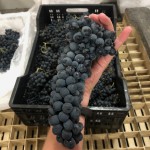
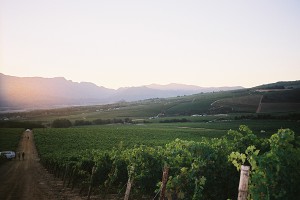
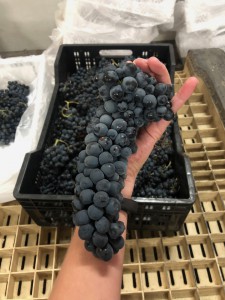
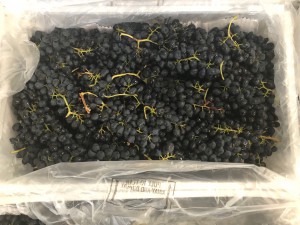
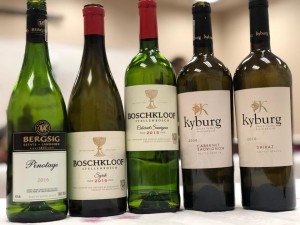


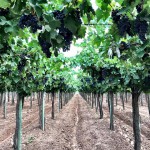
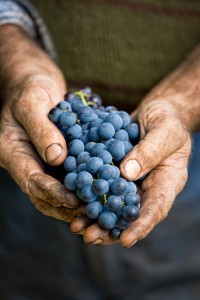
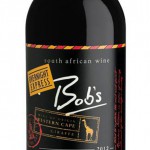
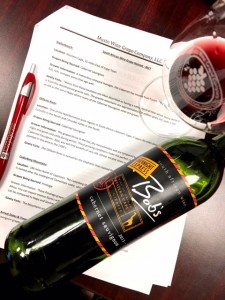
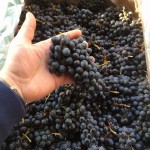
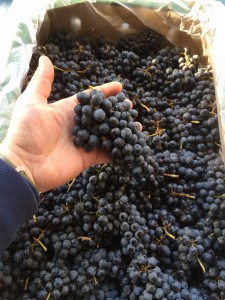
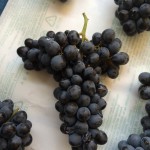
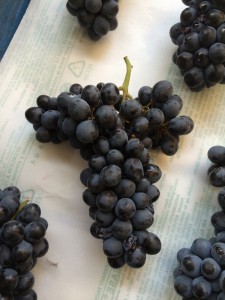
Recent Comments